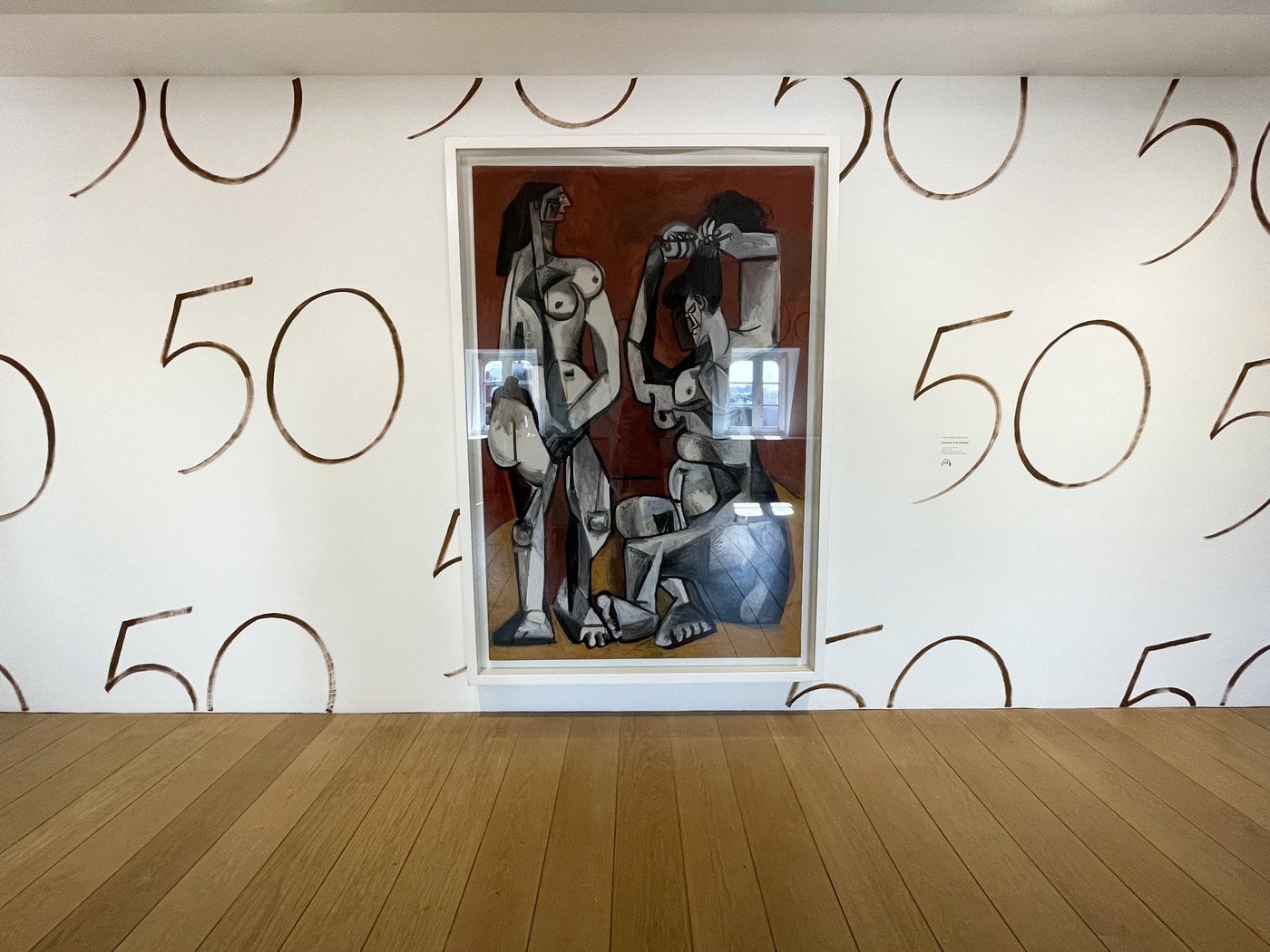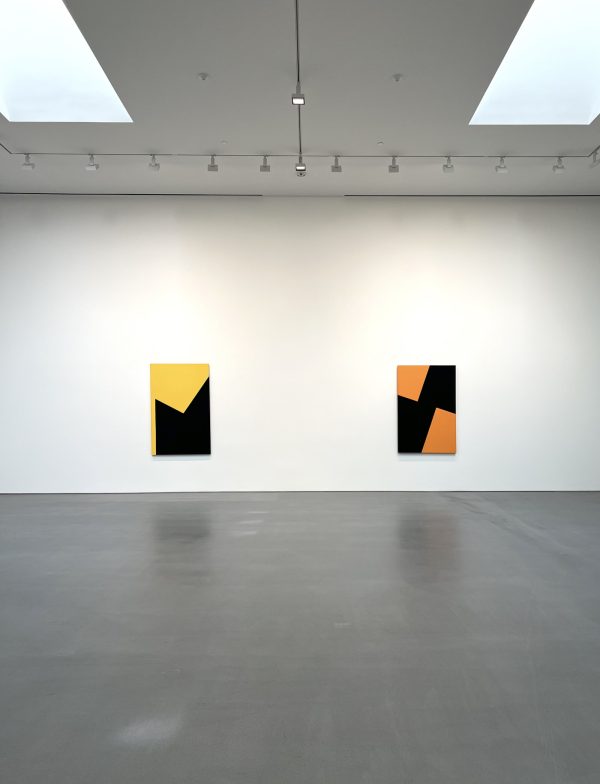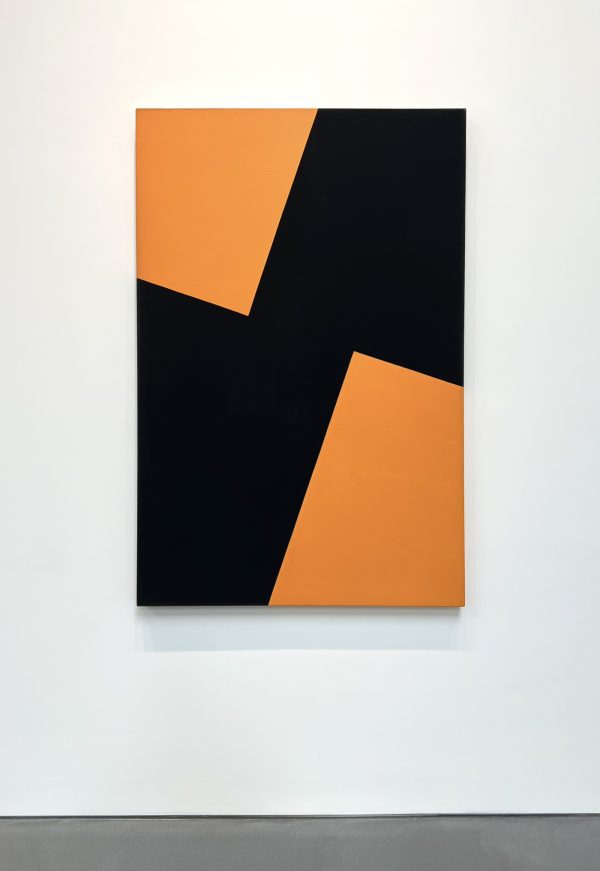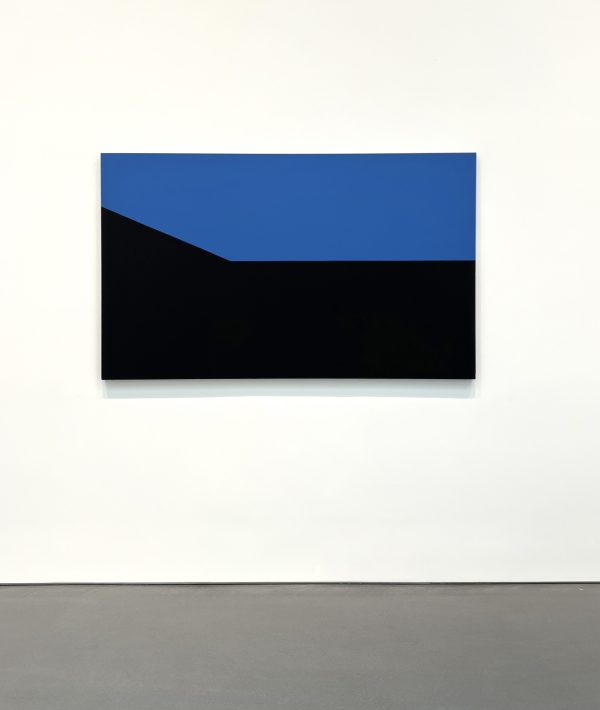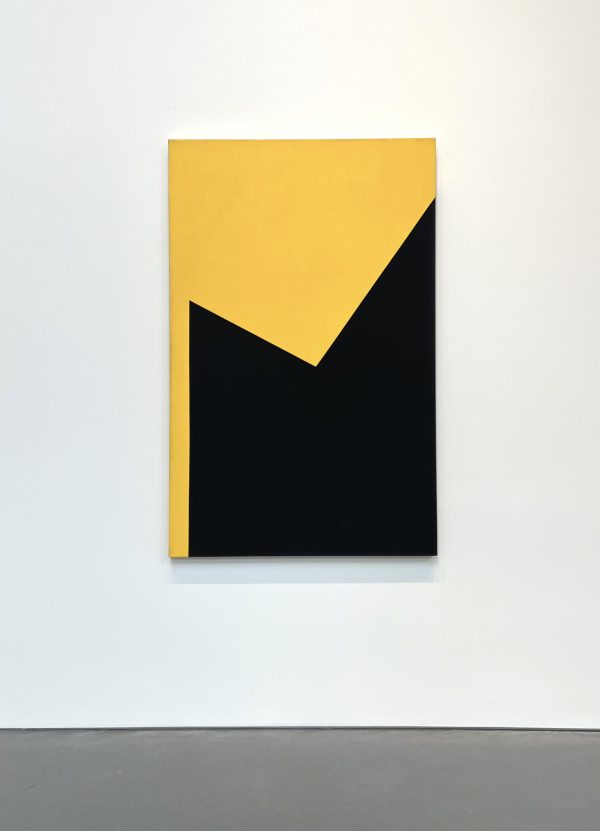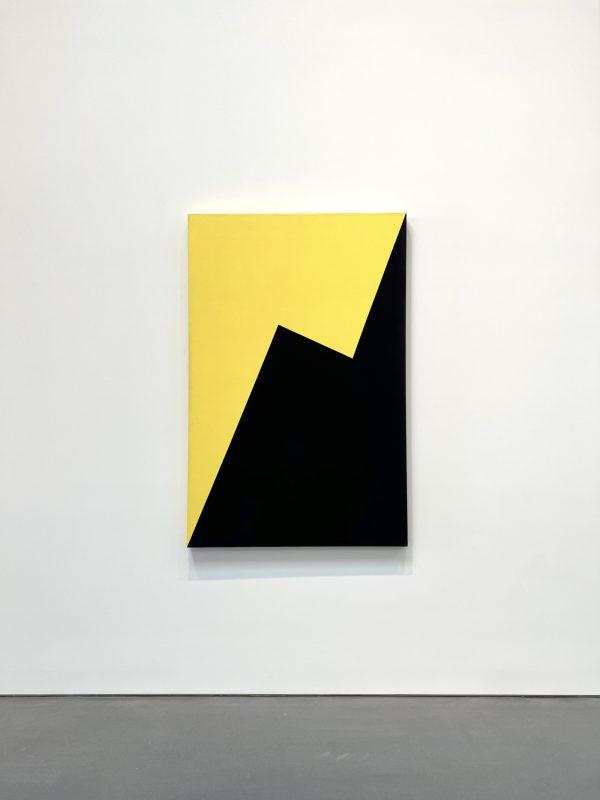Carmen Herrera Exhibition at Lisson Gallery, Los Angeles
Seeing Carmen Herrera’s painting for the first time in my life instantly reminded how important it is to see paintings in person. It’s sick to state something so obvious, It just is, they’re made to see unmediated. Lisson Gallery itself is like an incredible giant cube, a very very white cube with light that was perfect to view this work. Seeing a show that is so spare, formal and geometric activated within me a something, something something that takes place in the lower-levels, somewhere near or a part of my visual processing brain region. It probably has a name, but who needs it? This probably doesn’t make much sense and I'm not totally sure it needs to. I’m a painter and a wannabe Neuroscientist, not the other way around.
Wherever that lower level processing happens, whatever it might be, is a complete mystery and I’d like to keep it that way because it puts me in a position to reach for analogies and comparisons to fill in the gaps. That’s where poetry and art are made. I can overlay my map onto the territory and it’s ok if it's completely incongruous, because nothing is stable from my vantage point and everything changes. It’s all on the fly. Abstraction leaves out details, thereby encompassing more. People, contexts, situations, environments, noise or whatever fills in the details. It’s all nested and as distant as it might seem, this is an exercise in thinking and feeling something. Remember, I’m just a painter getting paid to write about my experience seeing paintings. When I see Herrera’s work, Ellsworth Kelly (whom she is only superficially related), Jonathan Lasker, Sophie Taeuber-Arp, Linda Daniels, and even early Frank Stella, I'm always overwhelmed with the experience of seeing the source of the incomprehensibly sophisticated engine. The layers dematerialize and I become the process. I’m seeing how language and meaning are formed on a basic, low-level level, that’s so spare and subtle and sophisticated, the experience itself becomes a sublime encounter with the self-consciousness of intelligence, learning and changing and growing and dying and most importantly, not knowing. Emptiness. All those things, all basic human stuff that to this day, still evades human understanding.
“Painting as a site for structure and language development”. This type of reflexivity and subject matter is such a powerful interest to me, that seeing Herrera’s work was actually jarring. I got nervous-excited. The split of the picture plane, the edge where black meets red had the gravitational force of a black hole and from the sole of my shoes to the top of my head, I became space dust in an instant poof, living in Flatland as an observer of the geometric violence of her edges. They vibrated with the intensity of a protesting star approaching the event horizon. These paintings were slowly filling my heart containers with the pure, abstract idea of perception and color as I tried to make sense of how they worked. Since this is how seeing and perceiving operate and how meaning is developed, it became silly to try and analyze or even talk. I then became silent and just looked. The looking and seeing gave way to work that gave me the sensation of what I imagine as being a total abstraction of an infinite block of potential blankness, an emptiness that is completely full of beauty and the distinctly human desire to make and comprehend something not known.
Herrera’s assertion of her agency is also one of painting’s vitality as a human activity and obviously that still stands today, even with work that was made in the 70’s. What her work (and other artists from this generation) say to me as a painter is, “Don’t cheat painting, give it the respect it deserves before you try and take any of it away. That’s when it becomes a real, fulfilling relationship”. And knowing that she was painting through long periods where conditions were very unfavorable to her type of work, “...stick to your guns, being a counterpoint isn’t always easy and requires you to be in it for the long haul…it’s remarkable what happens when you don’t compromise”. “Whatever you do over and over again, no matter how good or bad, becomes more subtle and sophisticated, so choose wisely”. It says all this and more within an ecosystem that encourages and even makes it really, really, really easy to just throw up your hands and say “who cares, does this even matter anymore”? The answer is yes, of course. It does matter. The argument could be made that this endeavor of painting matters even more now that we’re repeatedly being dragged into new and improved rat’s nests. The next one: Artificial Intelligence. Maybe now isn’t such a bad time to be a counterpoint.
INFO
Please visit https://www.lissongallery.com/exhibitions/carmen-herrera-the-1970s-part-2
For more information about the show:
“Lisson Gallery debuts in Los Angeles with a special exhibition of Carmen Herrera consisting of her Days of the Week series, seven paintings that evoke the distinctive character of each day. The exhibition is the second part of a presentation focused on her work from the 1970s, following Part 1 that was on view in New York in May 2022. The Days of the Week paintings were last exhibited together in Herrera’s solo touring museum show, Lines of Sight, at the Whitney Museum of American Art, New York, NY; the Wexner Center for the Arts, Columbus, OH; and K20: Kunstsammlung Nordrhein Westfalen, Düsseldorf, Germany (2016-2018). Carmen Herrera, The 1970s: Part 2 – also the first solo exhibition in Los Angeles for Herrera – marks a parallel with Lisson Gallery’s opening in New York in 2016, which was inaugurated by a selection of recent paintings and sculptures by the artist. To celebrate the opening of the Los Angeles gallery, a monumental Estructura by Herrera is also installed in the front courtyard.”

 English
English 日本語
日本語
